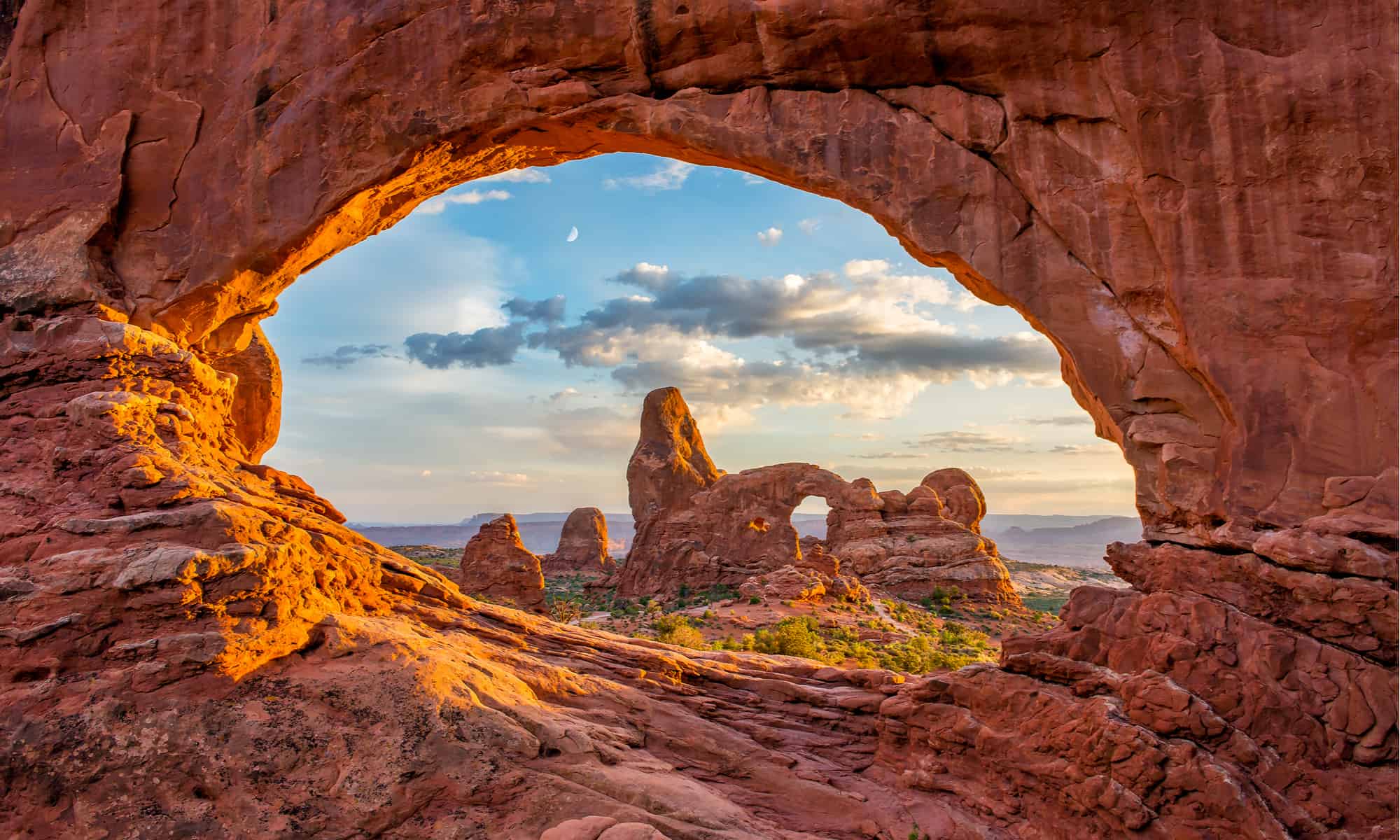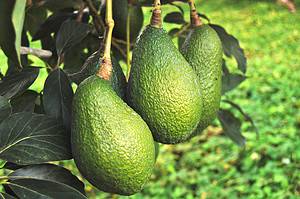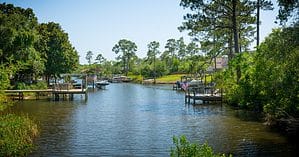Natural arches are a fascinating feature of many landscapes. These rock formations inspire awe and gratitude from those who find themselves witnesses to the diverse array of shapes and forms that the arches can produce.
Natural arches come into formation through eons of erosion and a process called weathering — the natural deterioration of rocks through the elements.
The United States is fortunate enough to have several of these arches within its borders, mostly centered around the American Southwest and — you guessed it — Arches National Park in Utah.
If you’re an arch enthusiast or just arch-curious and dipping your toes into the wild and wonderful world of arches, check out this list describing the most fantastic natural arches in the country.
1. Rainbow Bridge, Utah
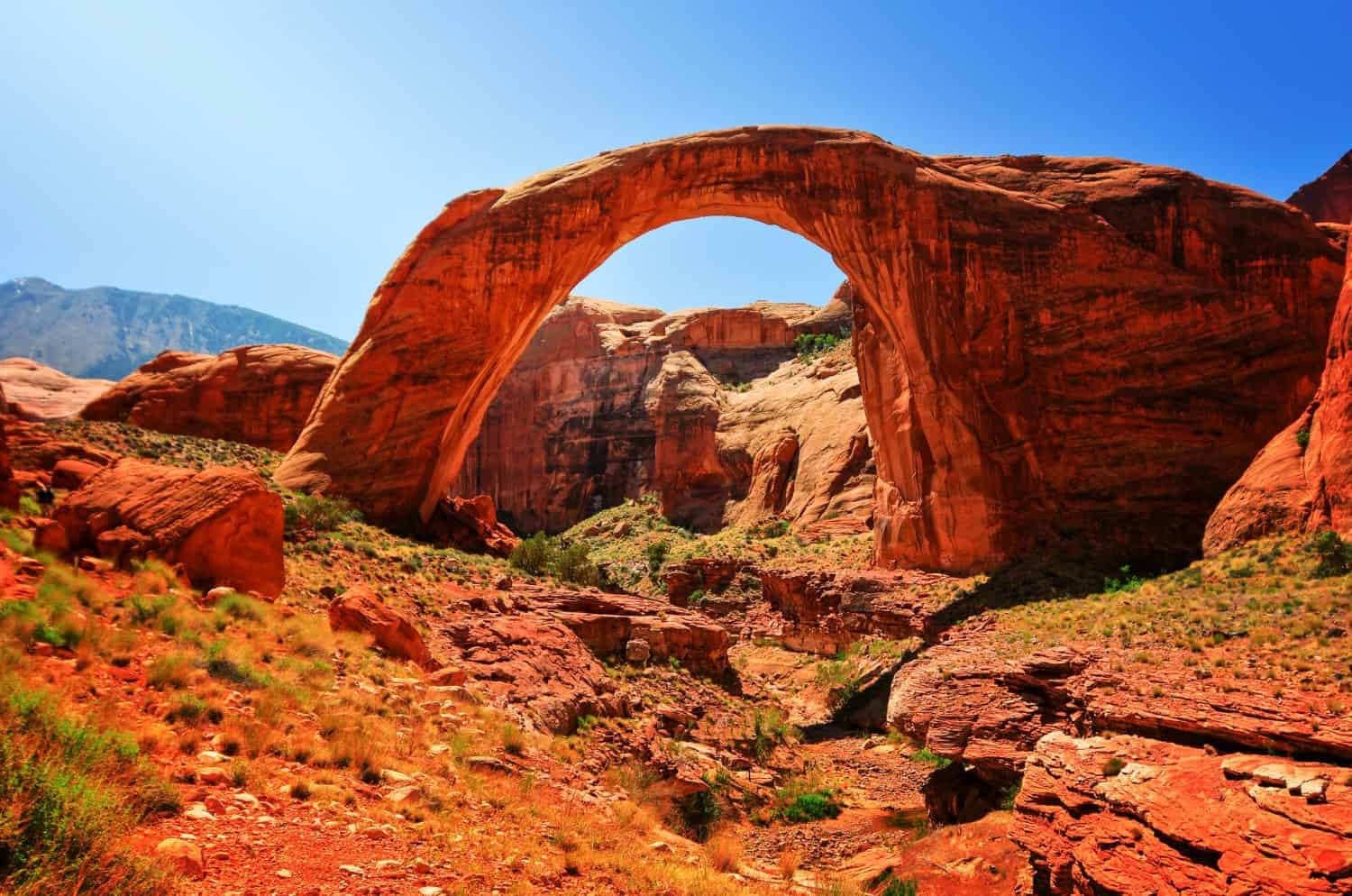
You could fit the Statue of Liberty under the arch of The Rainbow Bridge.
©ejanenisa99/Shutterstock.com
Rainbow Bridge is the initial entry in what is a definitive theme for this list — natural arches in Utah. Southern Utah probably has the highest density of natural arches in the world. These arches add another level to the already dramatic rock formations of this part of the country.
The Rainbow Bridge, a 275-foot-span sandstone natural arch located in Glen Canyon National Park, has been designated a national monument. This easily accessible arch can be reached via a two-hour boat ride on Arizona’s Lake Powell.
2. Landscape Arch, Utah
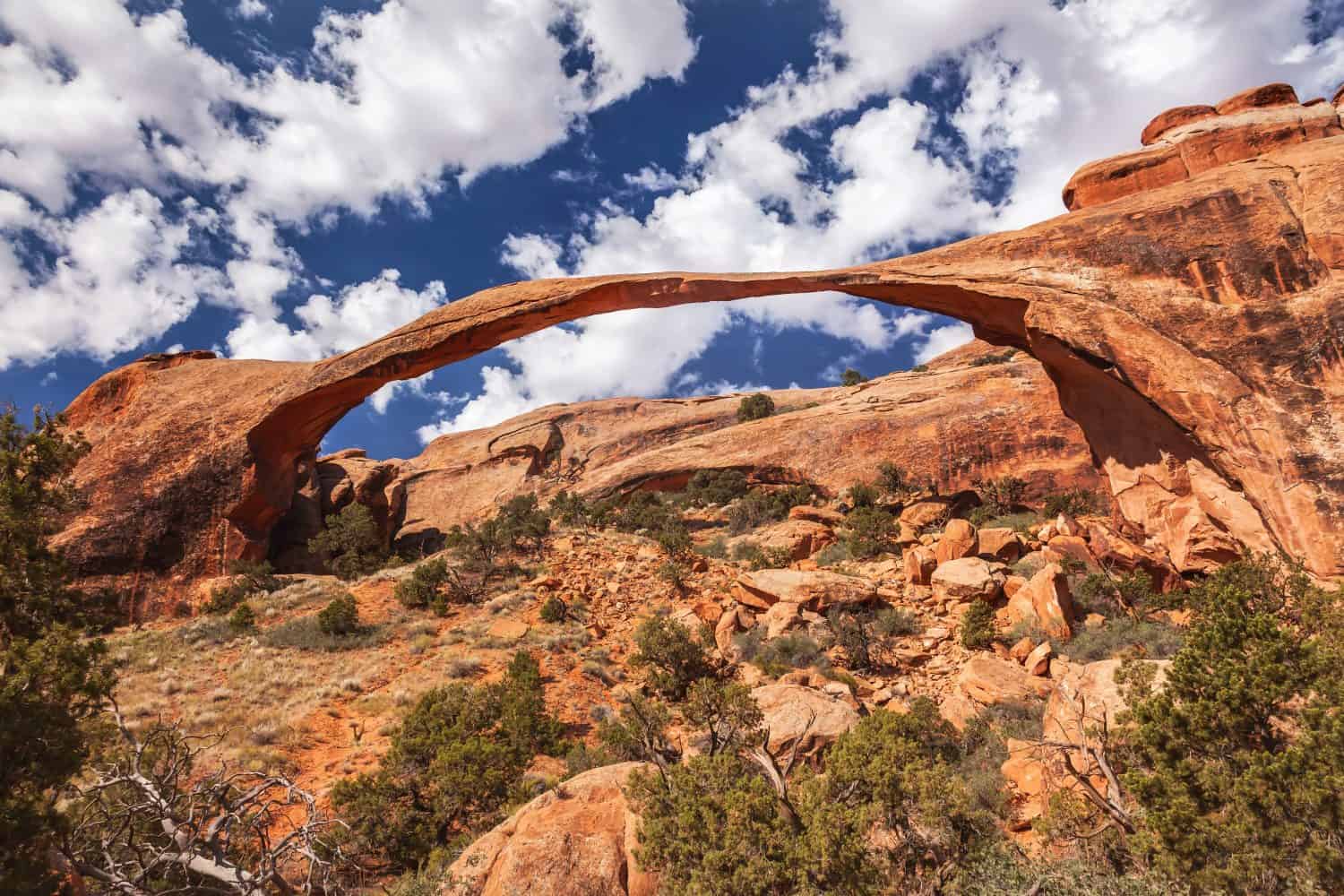
Landscape Arch is the longest and thinnest in the world.
©Bill Perry/Shutterstock.com
This natural arch is one of the many in Arches National Park. The geological formation is among the largest and longest in the world and the longest in the United States. The Landscape arch is 290 feet long and 77 feet high.
This arch is also easily accessible, and you can reach it by engaging in just a mile-long hike from the highway. The arch exists in a region of Arches National Park that’s called the Devil’s Garden — one of the densest concentrations of arches in Utah and the world.
3. Kolob Arch, Utah
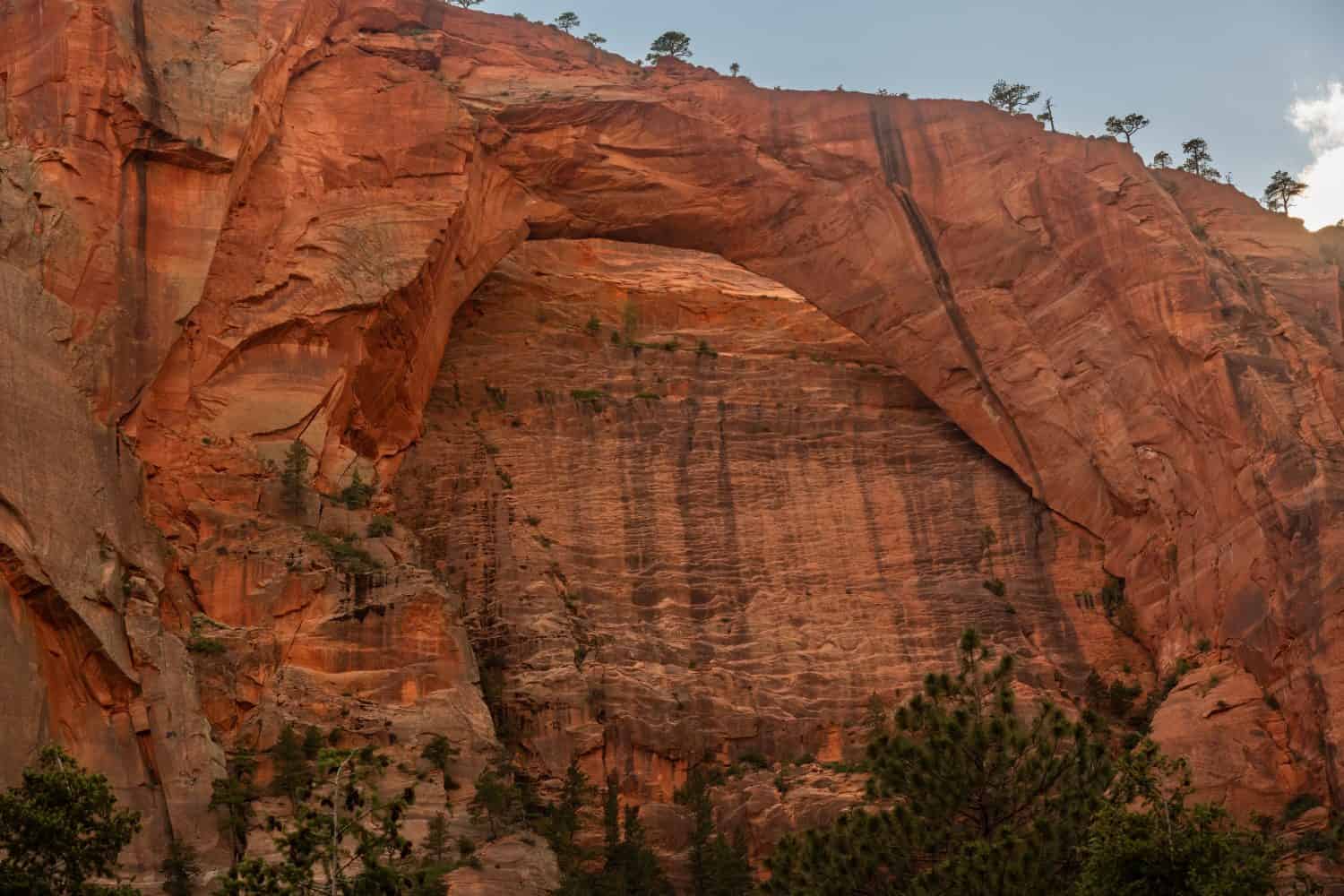
The dramatic outcropping of the Kolob Arch.
©Kelly vanDellen/Shutterstock.com
This rock formation is the sixth-longest natural arch in the world. Kolob Arch is approximately 287 feet long and towers high above the surrounding landscape on the side of a sheer cliff face.
It’s slightly more difficult to reach the Kolob Arch than the previous two entries on this list. It is accessed through hiking a 14-mile roundtrip trail through Ice Box Canyon in Zion National Park.
4. Morning Glory Natural Bridge, Utah
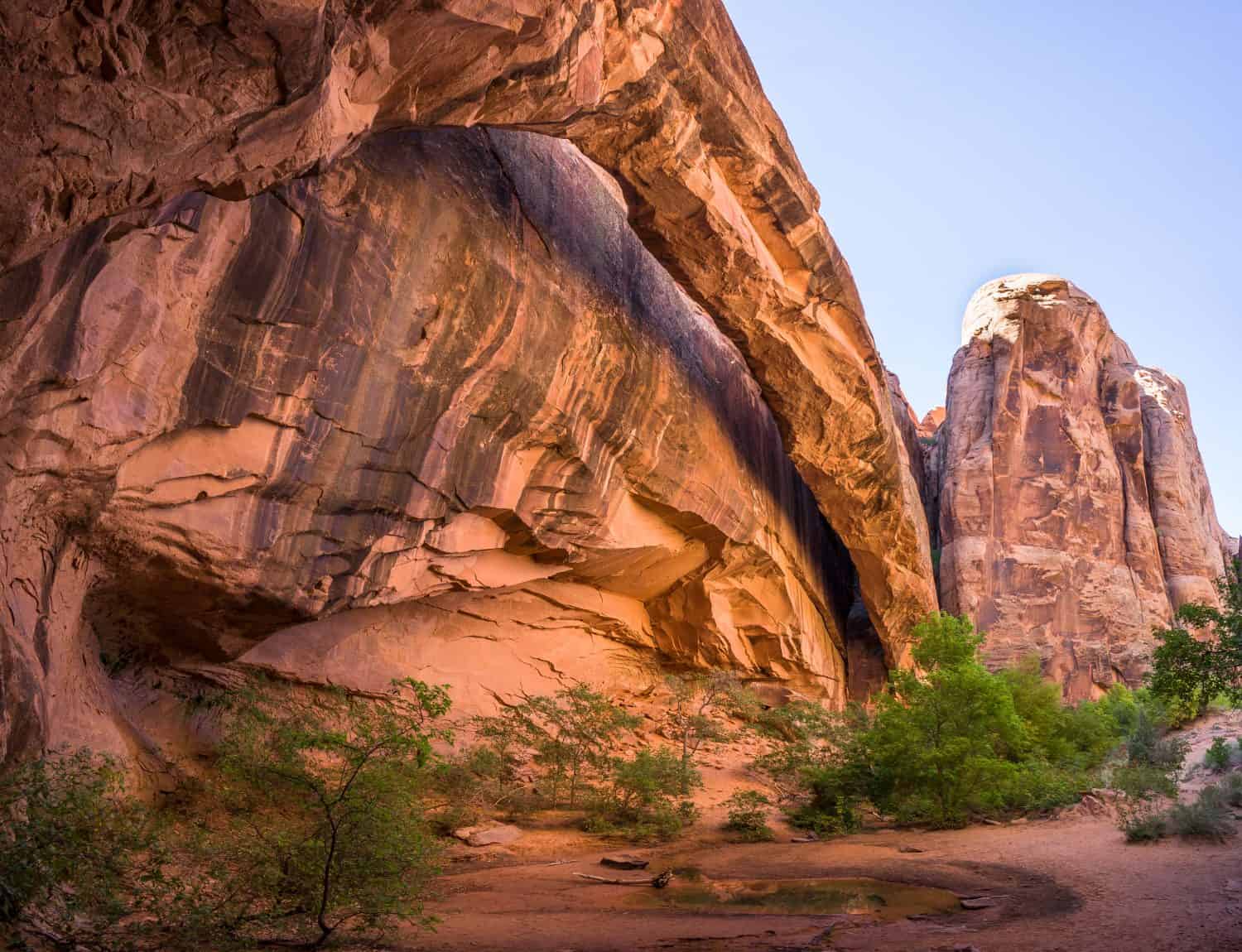
The natural bridge arches over its desert landscape.
©Laurens Hoddenbagh/Shutterstock.com
This entry is a large arch located in Grandstaff Canyon, Utah. This canyon lies just outside of Moab in the southeastern portion of the state.
This natural bridge is relatively easy to access at only a 4-mile roundtrip hike off of Utah State Route 128. The natural bridge lies on BLM land, so there’s no fee required to go and check it out for yourself.
5. Ear of the Wind Arch, Arizona
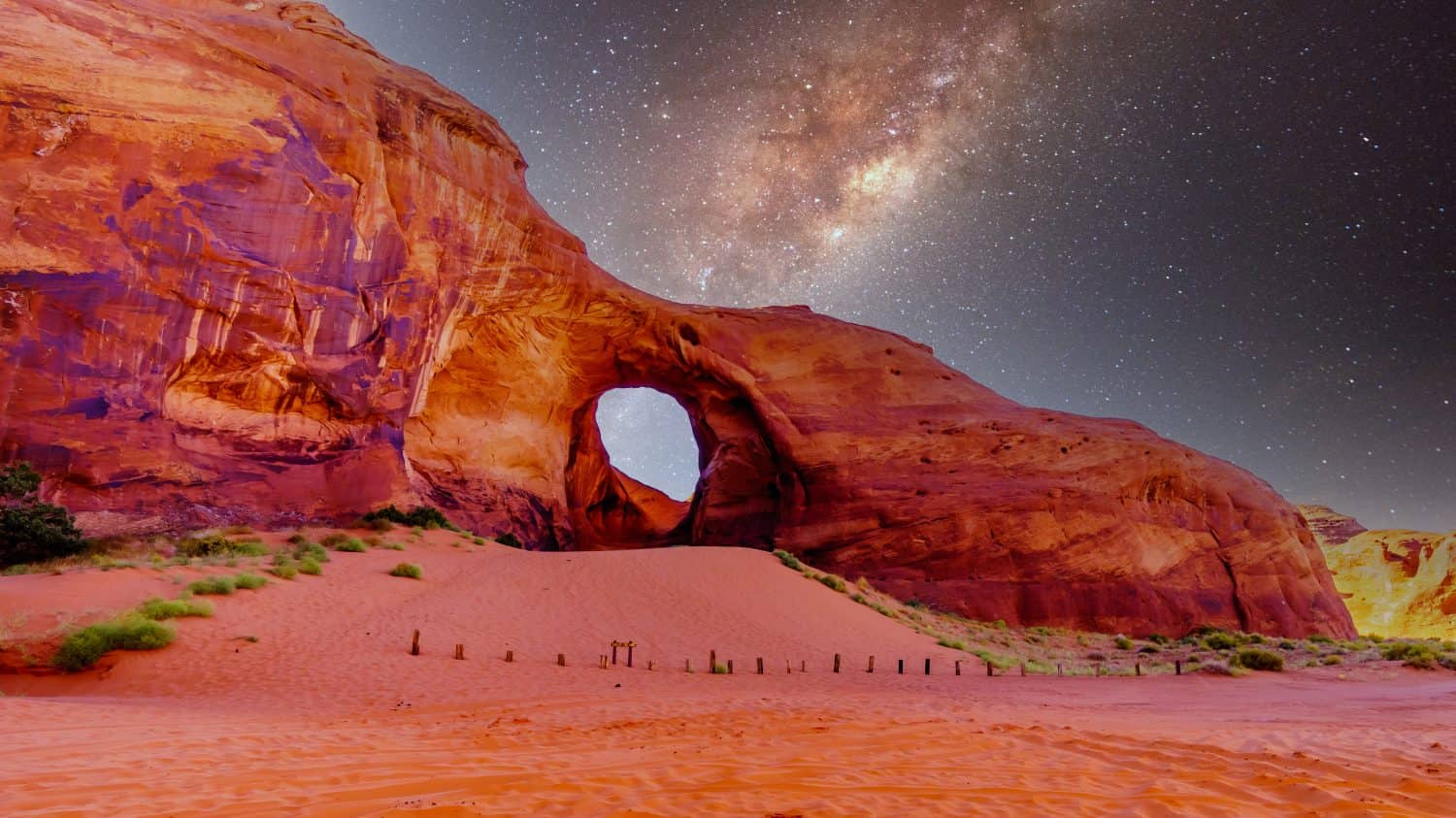
Ear of the Wind is close to many other spectacular monuments.
©Harry Beugelink/Shutterstock.com
This arch is a charismatic natural arch located in the spectacular Monument Valley of Arizona. This natural arch lies just off of the Monument Valley Scenic Drive. This is the highway in the movie Forrest Gump, and it also appears in other major motion pictures.
Ear of the Wind is a relatively large arch that stands approximately 134 feet high. Like many of the arches on this list, the arch is composed of red sandstone.
6. Sipapu Natural Bridge, Utah
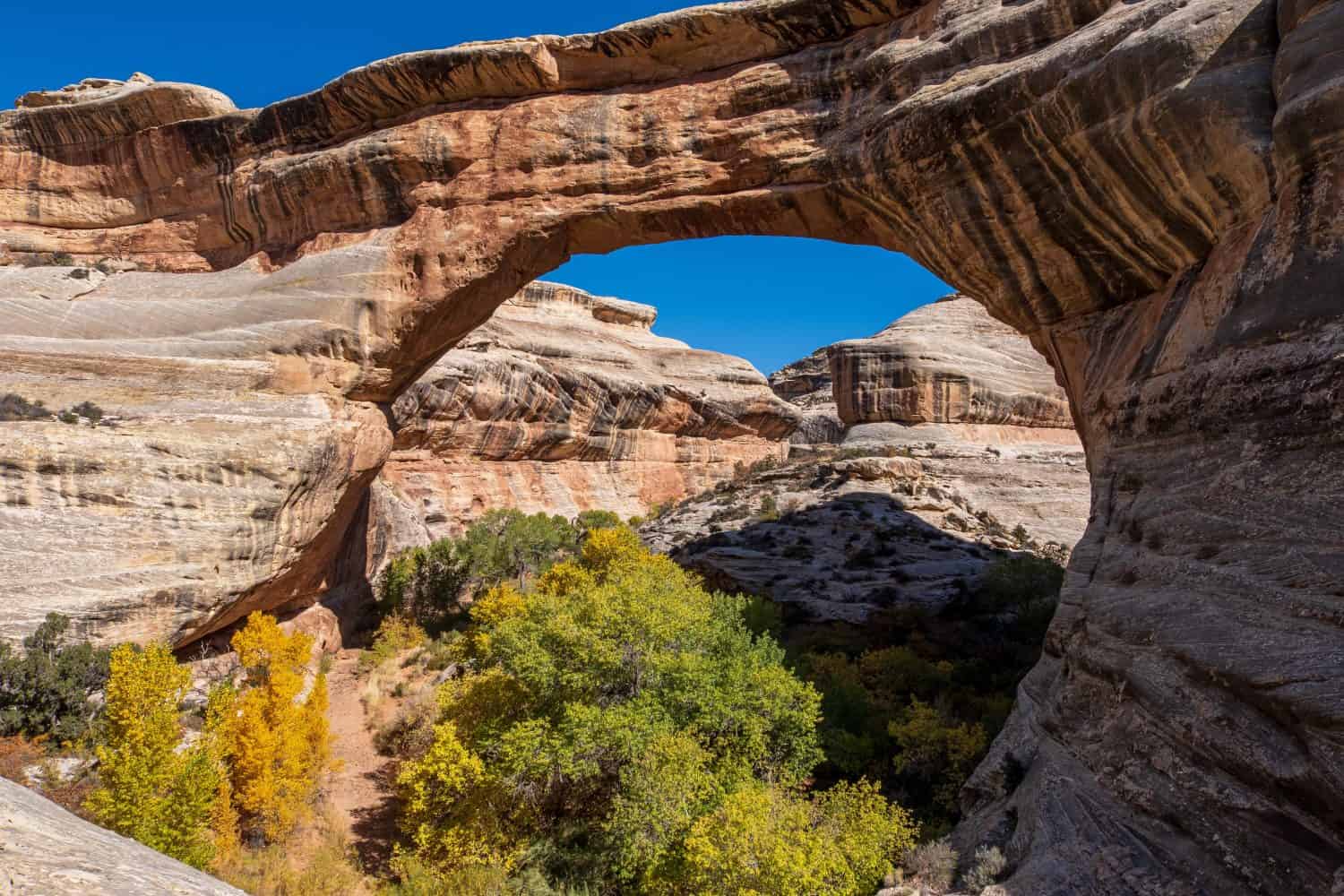
The bridge casts a shadow over a nearby canyon.
©Gordon Montgomery/Shutterstock.com
The Sipapu Natural Bridge in Utah spans the White Canyon in San Juan County, Utah. This massive natural bridge is 268 feet long, which makes it the fourth-longest natural arch in the world.
The word sipapu is a Hopi term that translates roughly to “portal.” This name refers to a symbolic portal from which they believed the first human ancestors emerged in antiquity. Reaching this natural bridge is quite elementary — in fact, you can view it from the highway without leaving your car. For a closer look, a short hike can bring you to close proximity of this bridge.
7. Double Arch, Utah
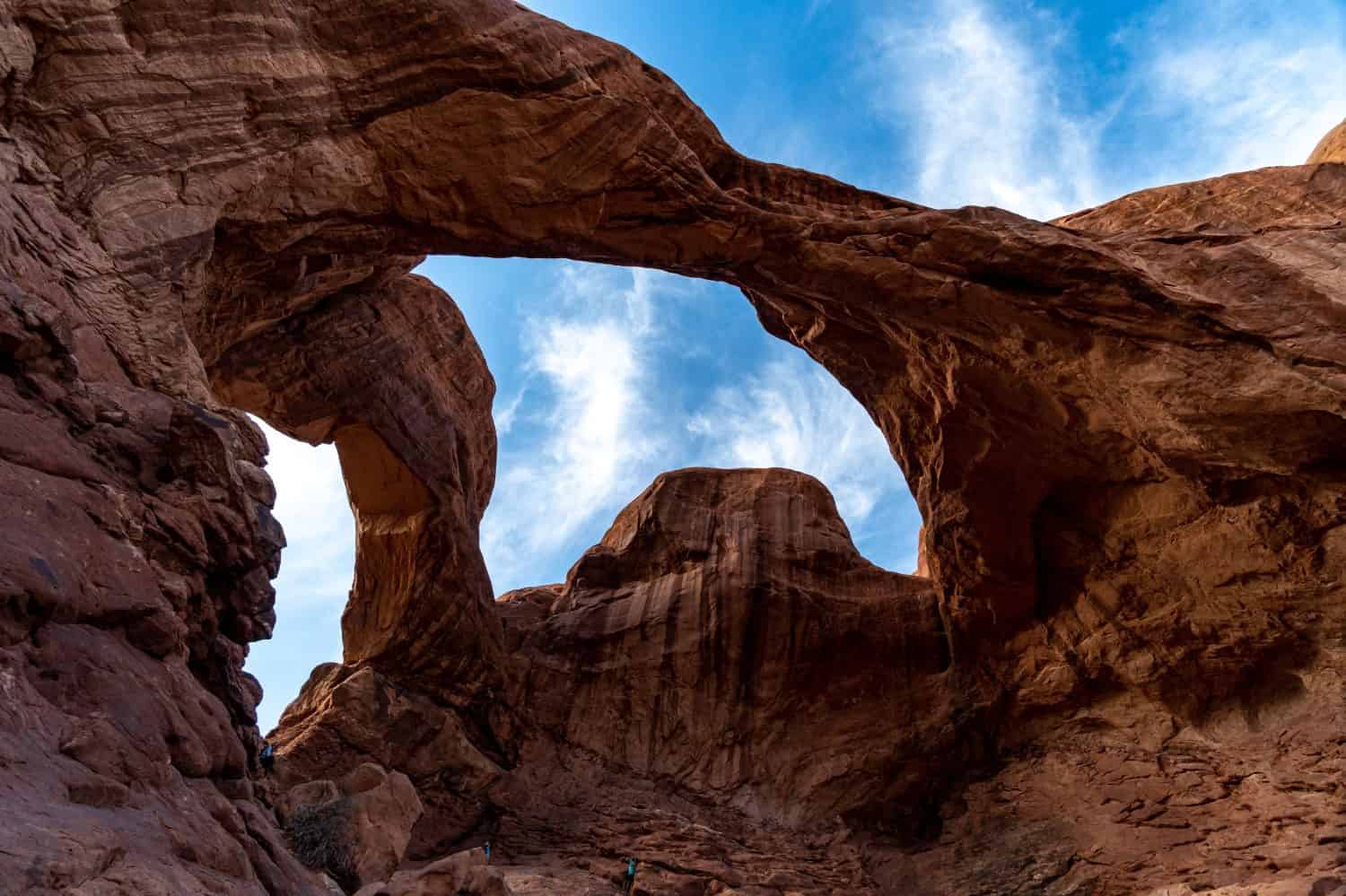
The Double Arch has an appropriate name.
©RebeccaDLev/Shutterstock.com
Another esteemed member of Arches National Park, the Double Arch in Utah, is highly accessible. It became famous as a backdrop in the film Indiana Jones and the Last Crusade.
The natural arch has a span of 148 feet and a height of 104 feet. This makes Double Arch the tallest arch in this particular national park.
The double arch is one of the more well-known arches in Arches National Park, thanks to the fact that it really is a double arch. Two of these natural arches are back to back in the narrow slot canyon.
8. Elephant Rock, Nevada
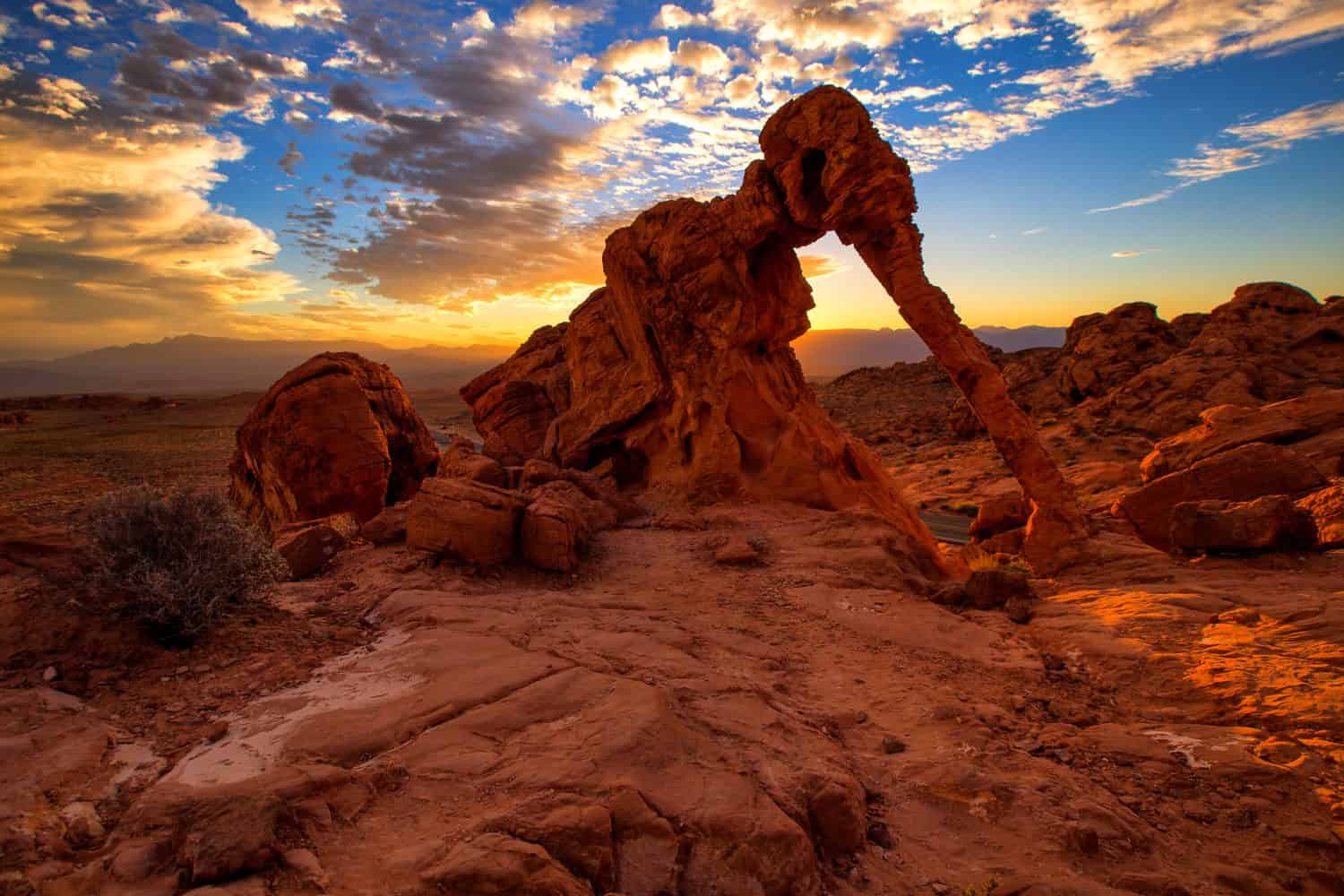
The
Elephant
Rock shares its name with a similar fixture in Saudi Arabia.
©Bill45/Shutterstock.com
The Elephant Rock of Nevada has this name due to the fact that it closely resembles an Elephant — imagine that!
You can find this natural arch in an area of Nevada known as The Valley of Fire. This state park is only a quick jaunt from Las Vegas and features an array of stunning Red Rock landscapes. This is another red-rock desert landscape that has made its way into multiple films and movies. It shows up in flicks such as Viva Las Vegas, Total Recall, and the television series Star Trek: Next Generations.
9. Snake Bridge, New Mexico
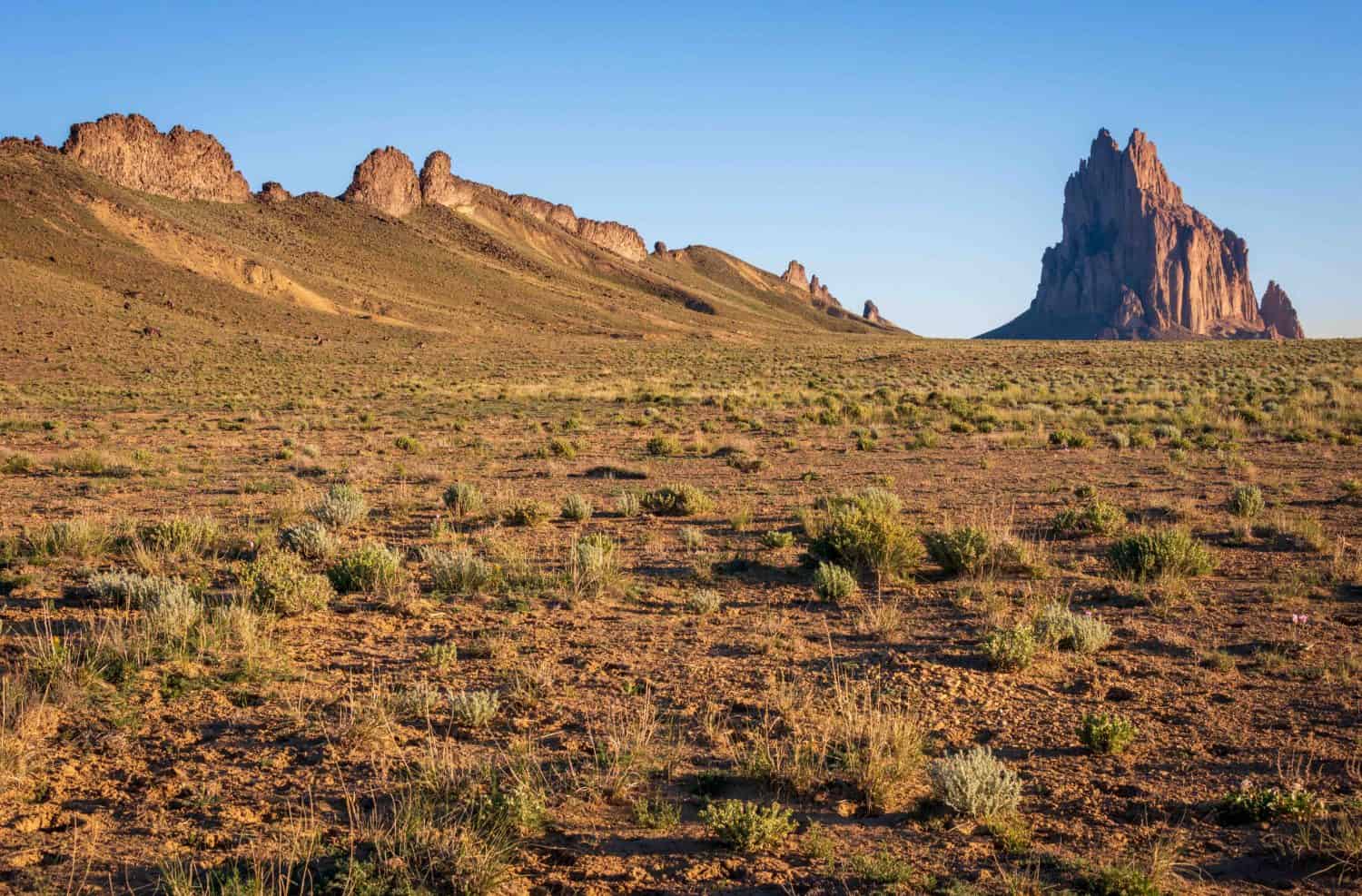
Snake Bridge isn’t far from other monuments in the Navajo Nation, like Shiprock.
©Zack Frank/Shutterstock.com
The Snake Bridge of New Mexico spans 204 feet and exists in Northern New Mexico. Unfortunately for the general public, this beautiful bridge is on Navajo Nation public land. This means that you can’t go there without tribal permission.
On top of this, even if one has permission to visit this bridge, it’s accessible only through a long and somewhat challenging hike through rugged high-elevation desert. For those lucky enough to surmount the challenges of seeing this natural landmark, the Snake Bridge offers a beautiful sight along with its gorgeous high desert context.
10. Kachina Bridge, Utah
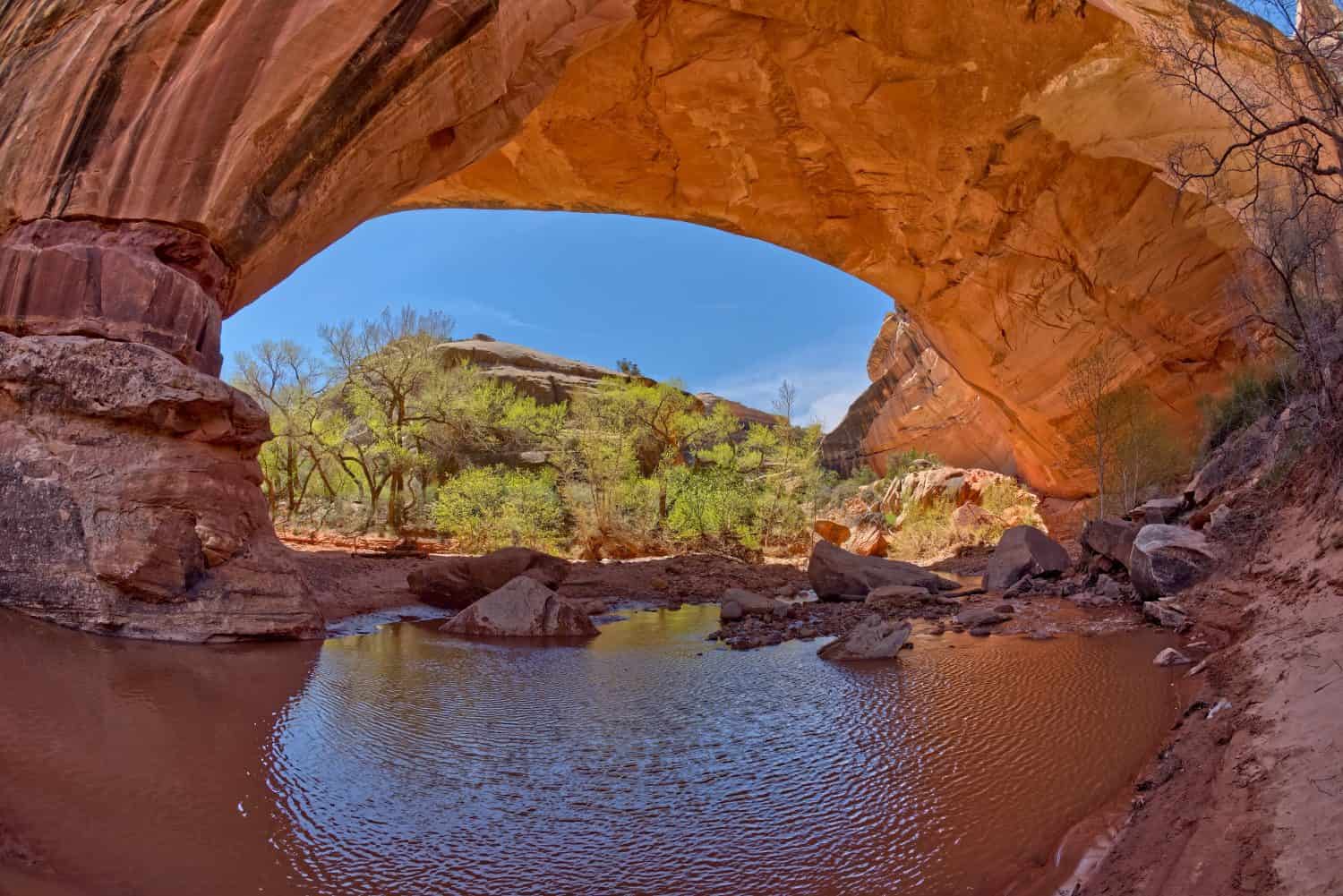
This natural bridge is named for a type of ancestral spirit.
©Deep Desert Photography/Shutterstock.com
Kachina Bridge is another sizable natural arch located in Natural Bridges National Monument. This rock formation is notable for reasons apart from its natural beauty — the area it’s located in is riddled with fascinating archaeological remnants of the Anasazi culture. This is the civilization that existed in this area thousands of years ago.
The name Kachina references the Kachina spirits, spiritual beings in the mythos of the early Ancestral Pueblo people. Depictions of these beings, along with scenes of daily life, are etched into the rock walls that comprise the Kachina Bridge.
11. Stevens Arch, Utah
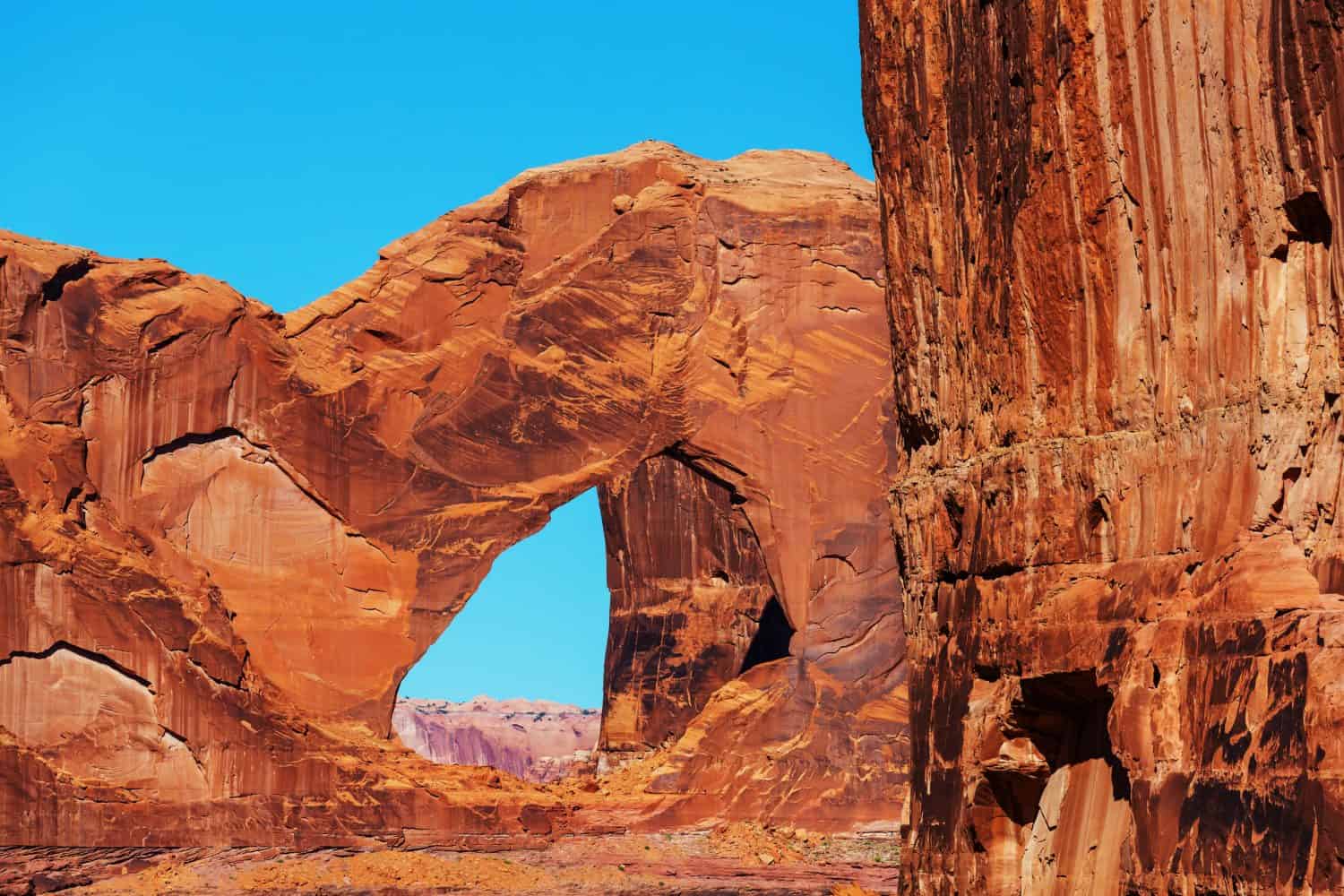
Stevens Arch strikes a dramatic pose.
©Galyna Andrushko/Shutterstock.com
This natural arch is a dramatic natural arch that exists in Grand Staircase Escalante National Monument. This massive park contains some of the most stunning rock formations in the country.
The arch is approximately 220 feet in span. It is made out of a special type of sandstone known as Navajo Sandstone. Getting to Stevens Arch isn’t a trial, but it’s not exactly a walk in the park either — reaching the natural bridge requires an 8-mile roundtrip hike through the desert country.
12. Wrather Arch, Arizona
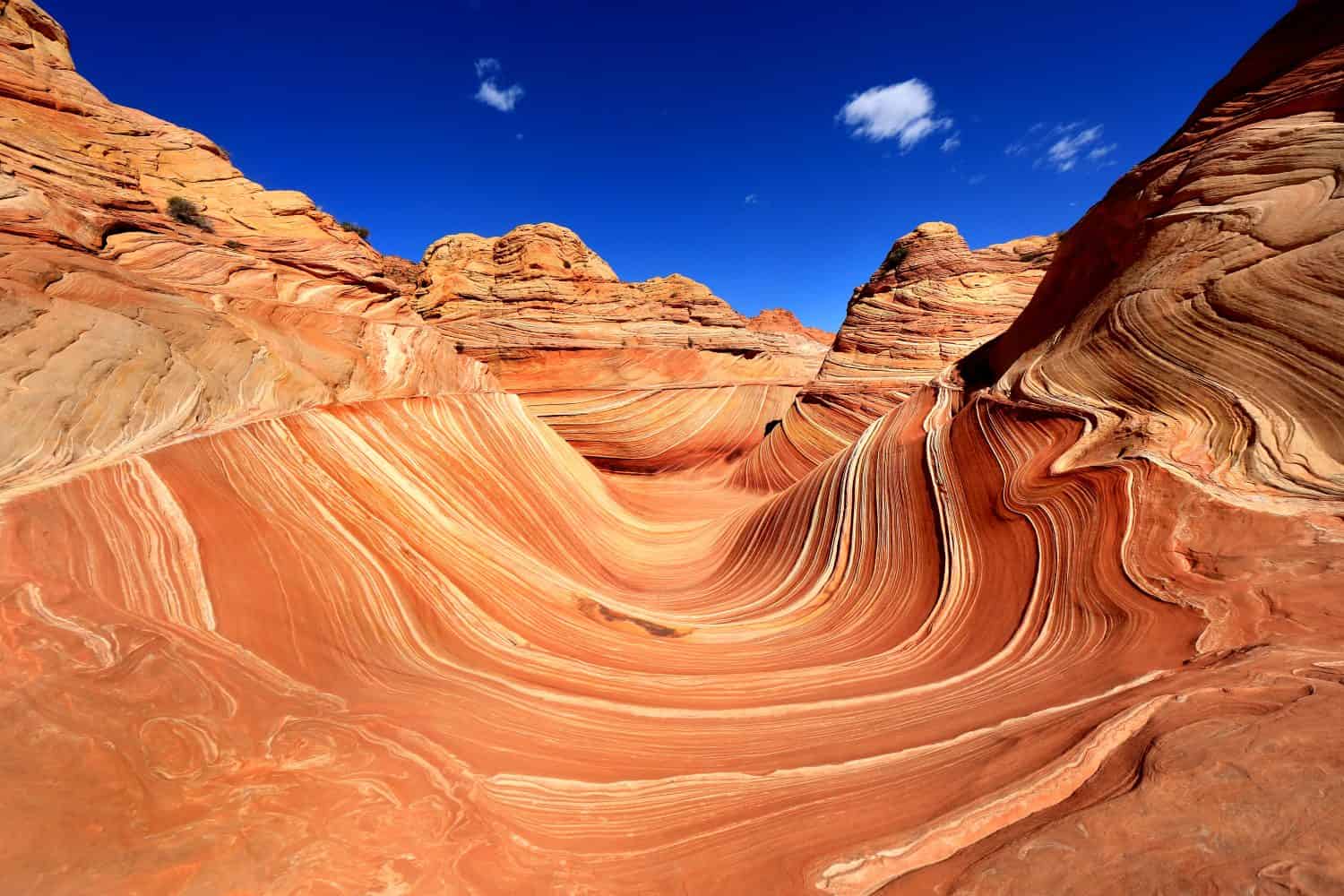
Wrather Arch is in the depths of Paria Canyon.
©Katrina Brown/Shutterstock.com
The Wrather Arch is located deep within the beautiful redrock Paria Canyon of Northern Arizona. This natural arch holds the distinction of being the largest natural arch outside of Utah.
Reaching this arch is perhaps the most challenging of any feature on this list. The Wrather Arch is lodged deep within the Paria Canyon, tucked away into a small slot canyon that likely won’t be reached by anyone without a topographical map.
13. Delicate Arch, Utah
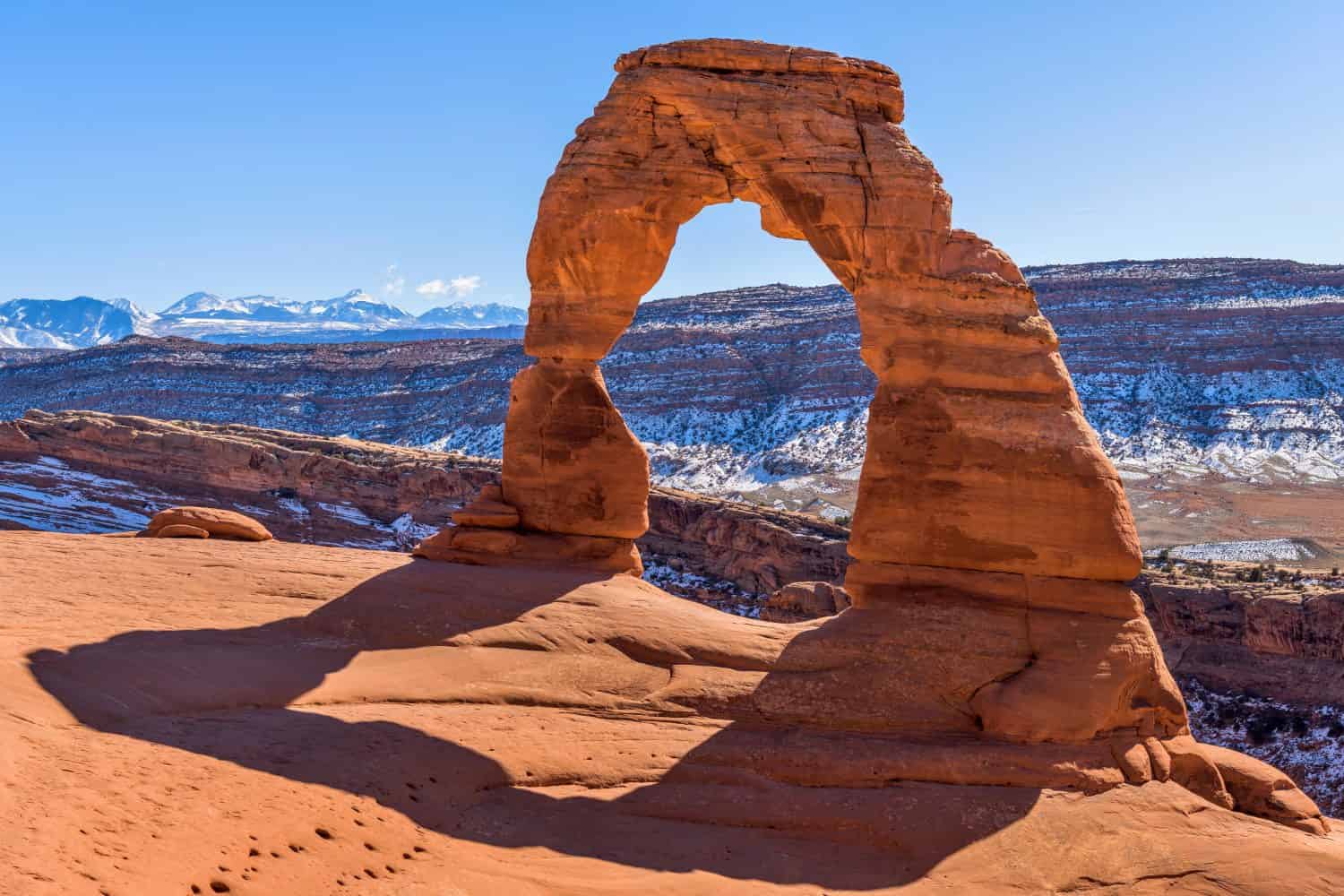
Delicate Arch is one of Utah’s most photographed arches.
©Sean Xu/Shutterstock.com
Perhaps one of the world’s most famous natural bridges, Delicate Arch, is located just outside Moab, Utah. Perched atop a dramatic sunset vista, the arch offers tourists and locals alike a spectacular photo opportunity.
Delicate Arch’s celebrity has made it an icon in Utah. It even serves as the image of some Utah license plates. In the 2002 Olympics, runners passed the Olympic torch through the arch.
Summary of the 13 Most Iconic Natural Arches in the United States
| Number | Name | Location |
|---|---|---|
| 1 | Rainbow Bridge | Utah |
| 2 | Landscape Arch | Utah |
| 3 | Kolob Arch | Utah |
| 4 | Morning Glory Natural Bridge | Utah |
| 5 | Ear of The Wind Arch | Arizona |
| 6 | Sipapu Natural Bridge | Utah |
| 7 | Double Arch | Utah |
| 8 | Elephant Rock | Nevada |
| 9 | Snake Bridge | New Mexico |
| 10 | Kachina Bridge | Utah |
| 11 | Stevens Arch | Utah |
| 12 | Wrather Arch | Arizona |
| 13 | Delicate Arch | Utah |
Thank you for reading! Have some feedback for us? Contact the AZ Animals editorial team.

